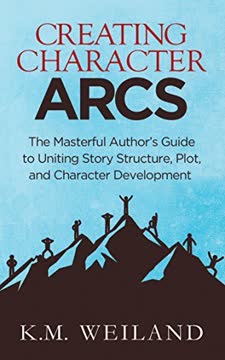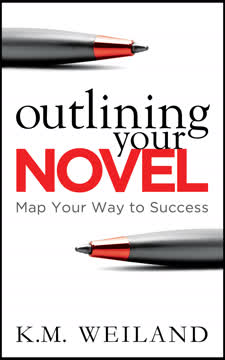Key Takeaways
1. Character and Plot Are Inseparable Forces
We cannot ask which is more important, structure or character, because structure is character; character is structure.
Integral connection. Plot and character are not separate entities but are deeply intertwined. Trying to develop one without considering the other risks creating a story with great parts but a weak whole. The character's internal journey directly influences the external plot, and the plot's challenges mold the character's arc.
Mutual influence. Major plot points revolve around the character's actions and reactions, driving the narrative forward. Simultaneously, the events of the plot force the character to confront their beliefs and make choices that shape their development. This symbiotic relationship ensures that the story feels cohesive and that character growth feels earned and logical within the narrative context.
Beyond entertainment. When plot and character work in harmony, the story resonates with readers on a deeper level than mere entertainment. The character's struggle becomes the reader's struggle, creating emotional connection and making the themes of the story more impactful. Understanding this fundamental unity is key to crafting powerful and memorable narratives.
2. Character Arcs Follow Understandable Structures
Surely, we can’t structure our character arcs without making them formulaic or robbing them of life and spontaneity. Wrong, actually.
Structure provides framework. While character development might seem airy-fairy and organic, it benefits greatly from structure, just like plot. Structuring character arcs doesn't make them formulaic; it provides a roadmap for realistic and dynamic human change within the story. This framework helps ensure the character's evolution feels earned and believable.
Beat-by-beat guidelines. By applying foundational story structures, like the Three-Act Structure, authors can create a beat-by-beat checklist for character arc guidelines. These guidelines flex to fit any type of story, ensuring that key moments of internal change align with external plot developments. This integration prevents character and plot from working against each other.
Cohesive whole. Understanding how character arc, plot structure, and theme work together simplifies the overall writing process. If you get one element right, chances are good you'll get all three right because they are symbiotic. Structuring character allows for intentional development, leading to more powerful and resonant stories.
3. Three Core Arc Types: Positive, Flat, and Negative
Although the possibilities for character development are as endless as the vagaries of human nature, we can narrow character arcs down to three basic types...
Fundamental patterns. Despite the infinite complexity of human personality, character development in stories generally follows three primary patterns. These types provide a foundation for understanding how a character will change (or not change) over the course of the narrative. Choosing the right arc type is a crucial early decision in plotting.
The three types:
- Positive Change Arc: Character starts incomplete, overcomes inner demons, ends in a better place.
- Flat Arc: Character is already complete, acts as a catalyst for change in the world/others, remains static.
- Negative Change Arc: Character ends in a worse state than they began, a descent into darkness.
Foundation for complexity. The Positive Change Arc is often the most complicated and foundational, as understanding how a character grows positively helps illuminate the mechanics of the other two. While variations exist within each type, these three categories provide a powerful lens for analyzing and constructing character journeys.
4. Positive Arc: Overcoming a Core Lie to Find Truth
The Change Arc is all about the Lie Your Character Believes.
Inner incompleteness. In a Positive Change Arc, the protagonist starts with a fundamental internal flaw: they believe a Lie about themselves, the world, or both. This misconception creates inner incompleteness and is the reason change is necessary. The Lie often manifests as a perceived strength initially but becomes an Achilles heel.
Wants vs. Needs. The Lie drives the character's external goal (the Thing He Wants), which is often a misguided attempt to fix the internal problem with an external solution. The true solution is the Truth (the Thing He Needs), which is the antidote to the Lie. The core conflict of the arc is the struggle between pursuing the Want (based on the Lie) and discovering/embracing the Need (the Truth).
Journey of discovery. The story takes the character on a journey where the Lie is challenged, often through a past trauma (the Ghost) and encounters in a new or altered world. Through trials and revelations, the character gradually realizes the Lie's falsity and the Truth's necessity, culminating in a choice to sacrifice the Want for the Need and emerge as a changed person.
5. Flat Arc: The Steadfast Catalyst Who Changes the World
Also called the “testing arc,” the Flat Arc is about a character who does not change.
Already possesses Truth. Unlike the Positive Change Arc, the Flat Arc protagonist begins the story already complete and grounded in the Truth. They don't need to change internally; their role is to use their steadfast beliefs and skills to impact the world and characters around them. They are the agents of change, not the subjects of it.
Testing and influence. The story tests the protagonist's commitment to the Truth through external opposition and challenges (the world's Lie). While they may be shaken or tempted, they never abandon their core beliefs. Their unwavering stance and actions serve to expose the Lie in the world and catalyze change in supporting characters, who often follow their own Positive Change Arcs.
World transformation. The Flat Arc is less about the protagonist's personal growth and more about the transformation of their environment or the people within it. The Normal World, which may represent either the Truth to be protected or the Lie to be overthrown, is significantly altered by the protagonist's influence by the story's end.
6. Negative Arc: The Tragic Descent into Darkness
The Negative Change Arc tells the story of a character who ends in a worse place than that in which he started—and probably drags others down with him.
Failure and destruction. Negative Change Arcs explore a character's failure to overcome their flaws, leading to a worse state by the story's conclusion. These are often cautionary tales, showing how clinging to a Lie or rejecting a Truth can lead to destruction, both for the character and those around them. Unrelenting vice leads to ruin.
Variations of descent:
- Disillusionment Arc: Character overcomes a Lie but finds the resulting Truth tragic or negative.
- Fall Arc: Character clings to a Lie, rejects opportunities for Truth, and descends into deeper sin/destruction.
- Corruption Arc: Character starts with Truth but is lured away by a Lie, consciously choosing darkness.
Lie's power. In Negative Arcs, the Lie is often something the character already possesses but devalues, or a false promise they are lured by. The character consistently chooses the Lie over the Truth, even when presented with clear opportunities to change. This stubborn adherence to the wrong path drives the tragic outcome.
7. Plot Points Drive Character Transformation
By this point, you should be able to see how the plot points steer your story around the corners of your character’s arc.
Structural catalysts. Major plot points serve as critical turning points that propel both the external narrative and the internal character journey. They are not merely plot devices but moments designed to challenge the character's Lie and force them toward the Truth (or deeper into the Lie in a Negative Arc).
Key turning points:
- First Plot Point (~25%): Forces the character out of the Normal World, confronting them with the main conflict and initiating their reaction phase. It often presents a choice that irrevocably sets the arc in motion.
- Midpoint (~50%): A major revelation or event that shifts the character from reacting to acting. It's often a "Moment of Truth" where the character gains crucial insight into the Lie/Truth, even if they don't fully embrace it yet.
- Third Plot Point (~75%): The lowest point, a crushing defeat that forces the character to confront the full ramifications of the Lie and make a soul-wrenching choice between the Thing They Want and the Thing They Need. It often involves a symbolic or literal death of the old self.
Integrated journey. These structural beats ensure that the character's internal struggle is constantly tested and advanced by the external conflict. The plot points provide the necessary pressure cooker for the character's evolution, making the arc feel dynamic and integral to the story's progression.
8. The Lie vs. Truth Conflict Fuels the Journey
The Lie plays out in your character’s life, and your story, through the conflict between the Thing He Needs (the Truth) and the Thing He Wants (the perceived cure for the symptoms of the Lie).
Core internal battle. At the heart of most character arcs is the fundamental conflict between a deeply held misconception (the Lie) and the necessary realization or belief (the Truth). This internal struggle is the engine driving the character's choices and reactions throughout the story. The character's external goal (the Want) is often a manifestation of the Lie, while the true solution to their inner problem is the Truth (the Need).
Manifestation in plot. This internal conflict is dramatized through the external plot. The challenges and obstacles the character faces are often designed to expose the flaws in their Lie-based approach and reveal the efficacy of the Truth. The character is often "punished" for acting according to the Lie and rewarded for glimpses of the Truth.
Thematic resonance. The Lie vs. Truth conflict is also the foundation of the story's theme. The character's journey from believing the Lie to embracing the Truth (or vice versa in a Negative Arc) is the story's argument about a fundamental human or societal principle. This makes the character's personal struggle universally relatable and meaningful.
9. The Impact Character Catalyzes Change
This is the character who slams into your protagonist, catalyzes him into change, and has a major impact on his life.
Agent of change. The Impact Character is a crucial figure in a Change Arc because they represent the story's Truth and directly challenge the protagonist's Lie. They are the catalyst that forces the protagonist to confront their misconceptions and consider a different way of seeing the world. Without this character, the protagonist's change is unlikely or unmotivated.
Opposing worldviews. The conflict between the protagonist and the Impact Character stems from their opposing worldviews: the protagonist's Lie versus the Impact Character's Truth. This conflict isn't always antagonistic; the Impact Character can be a mentor, friend, love interest, or even the antagonist, but their presence consistently highlights the alternative to the protagonist's flawed belief.
Providing the answer. The Impact Character possesses the knowledge or embodies the perspective that the protagonist needs to overcome their Lie and achieve inner wholeness. They are present at crucial moments, offering advice, demonstrating the Truth through their actions, or simply existing as a living embodiment of what the protagonist needs to become.
10. Minor Characters Support Theme and Main Arc
But every prominent minor character should have an arc.
Beyond the protagonist. While the protagonist's arc is central, prominent minor characters also benefit from having their own, albeit condensed, arcs. These "minor arcs" involve having individual goals, facing obstacles, and reaching some form of resolution by the story's end. Not every single character needs a full, complex arc, but key supporting players should show some form of development or have a clear journey.
Building thematic depth. Minor characters are invaluable for exploring the story's theme from different angles. By giving them beliefs and struggles related to the same core Lie/Truth conflict as the protagonist, authors can create a richer, more nuanced thematic landscape. Contrasting the protagonist's approach to the theme with that of allies or antagonists highlights the story's central argument.
Reflecting the main arc. Minor character arcs often function as reflections of the protagonist's journey. In a Flat Arc, supporting characters may follow Change Arcs influenced by the protagonist's steadfast Truth. In a Change Arc, allies or antagonists might mirror the protagonist's struggle with the Lie or embody the consequences of embracing it. This interconnectedness strengthens the overall narrative structure and thematic coherence.
11. The Resolution Shows the Arc's Lasting Impact
This important ending scene(s) is there to bookend the opening scene.
New Normal World. The Resolution provides a glimpse into the character's life after the main conflict and arc are complete. It serves as a bookend to the opening Normal World, visually demonstrating how the character has changed and how their world has been altered as a result of their journey. This new normal reflects the hard-won Truth (or the tragic consequences of the Lie).
Answering the theme. The final scenes explicitly or implicitly answer the thematic question posed at the story's beginning. The character's actions and the state of their world in the Resolution provide the ultimate proof of whether the Lie or the Truth prevailed in their life and in the narrative. This reinforces the story's core message.
Proof of change. For a Positive Change Arc, the Resolution shows the character acting according to their new Truth, often achieving a sense of peace or fulfillment, even if they didn't get everything they initially Wanted. For a Flat Arc, it shows the world transformed by the protagonist's influence. For a Negative Arc, it underscores the tragic failure and its lasting, often destructive, effects.
Last updated:
FAQ
1. What is "Creating Character Arcs" by K.M. Weiland about?
- Comprehensive Guide to Character Arcs: The book is a detailed manual for writers on how to craft compelling character arcs that are deeply integrated with story structure and plot.
- Focus on Three Main Arc Types: Weiland explores the Positive Change Arc, Flat Arc, and Negative Change Arc, providing frameworks for each.
- Practical, Step-by-Step Approach: The book offers actionable advice, beat-by-beat checklists, and examples from popular stories to help writers apply the concepts.
- Integration of Plot, Character, and Theme: Weiland emphasizes that character arc, plot structure, and theme are inseparable and must work together for a powerful story.
2. Why should I read "Creating Character Arcs" by K.M. Weiland?
- Elevate Your Storytelling: The book helps writers move beyond interesting characters and exciting plots to create stories that truly resonate with readers.
- Avoid Common Pitfalls: Weiland identifies and helps writers avoid mistakes like separating plot and character or writing stories without meaningful arcs.
- Flexible for Any Genre: The methods and structures are adaptable to any type of story, from standalone novels to series, and across genres.
- Practical Tools and Examples: The book is filled with checklists, questions, and real-world examples, making it easy to implement the advice.
3. What are the key takeaways from "Creating Character Arcs" by K.M. Weiland?
- Structure and Character Are Linked: Plot structure and character arc are two sides of the same coin; you can't have one without the other.
- Three Core Arc Types: Understanding Positive Change, Flat, and Negative Change Arcs is essential for crafting dynamic stories.
- The Lie and the Truth: Every character arc is built around a central Lie the character believes and the Truth they must discover.
- Story Beats for Arcs: Each arc type has specific structural beats (e.g., First Plot Point, Midpoint, Climax) that guide the character’s transformation.
4. How does K.M. Weiland define a character arc in "Creating Character Arcs"?
- Character Arc as Change: A character arc is the internal journey a character undergoes, typically involving a shift in beliefs, attitudes, or self-perception.
- The Lie vs. The Truth: The arc is driven by the character’s belief in a Lie, which is challenged and ultimately replaced (or not) by a Truth.
- Integration with Plot: The arc is not separate from the plot; the character’s internal changes are reflected in and drive the external story events.
- Types of Arcs: Weiland categorizes arcs into Positive Change, Flat, and Negative Change, each with its own structure and purpose.
5. What is the Positive Change Arc, and how do you write one according to "Creating Character Arcs"?
- Definition: The Positive Change Arc follows a protagonist who starts with a personal Lie, faces challenges, and ultimately overcomes the Lie to embrace a positive Truth.
- Key Elements: The arc includes the Lie, the Thing the Character Wants, the Thing the Character Needs (Truth), the Ghost (backstory wound), and a series of plot-driven turning points.
- Structural Beats: The arc is mapped onto the Three-Act Structure, with specific moments like the First Plot Point, Midpoint (Moment of Truth), and Climax marking the character’s evolution.
- Example Stories: Weiland uses examples like "A Christmas Carol," "Jane Eyre," and "Toy Story" to illustrate how the Positive Change Arc works in practice.
6. What is the Flat Arc, and how does it function in "Creating Character Arcs"?
- Definition: In the Flat Arc, the protagonist already knows the Truth at the story’s start and uses it to challenge and change the world or other characters, rather than changing themselves.
- Role in Story: The Flat Arc character acts as a catalyst, helping others overcome their Lies, and is often tested but never abandons their core Truth.
- Structure: The Flat Arc still follows the Three-Act Structure, but the focus is on the protagonist’s impact on the world and supporting characters, not on their own transformation.
- Example Stories: Weiland cites "The Hunger Games," "Captain America: The Winter Soldier," and "True Grit" as examples of Flat Arc protagonists.
7. What is the Negative Change Arc, and how is it structured in "Creating Character Arcs"?
- Definition: The Negative Change Arc features a protagonist who either fails to overcome their Lie, becomes corrupted, or is disillusioned, ending in a worse state than they began.
- Three Variations: Weiland identifies the Disillusionment Arc (character learns a tragic Truth), the Fall Arc (character clings to the Lie and is destroyed), and the Corruption Arc (character rejects the Truth and embraces the Lie).
- Structure and Beats: Like other arcs, the Negative Change Arc is mapped onto the Three-Act Structure, with key moments where the character faces choices and ultimately descends.
- Example Stories: "The Great Gatsby," "Wuthering Heights," and the "Star Wars" prequels are used to illustrate the different types of Negative Change Arcs.
8. What are the core concepts of "The Lie Your Character Believes" and "The Thing Your Character Needs" in K.M. Weiland's method?
- The Lie: This is a deeply held, often subconscious, false belief about the self or the world that drives the character’s actions and internal conflict.
- The Thing the Character Wants: An external, plot-driven goal that the character pursues, often as a way to avoid facing the Lie.
- The Thing the Character Needs (Truth): The internal realization or change the character must achieve to overcome the Lie and find fulfillment.
- Conflict Between Want and Need: The tension between what the character wants and what they truly need is the engine of both the plot and the character arc.
9. How does "Creating Character Arcs" by K.M. Weiland integrate character arc with story structure and plot?
- Plot and Character Are Intertwined: Weiland insists that plot events and character development must be developed together, not separately.
- Structural Alignment: Major plot points (Inciting Event, First Plot Point, Midpoint, Third Plot Point, Climax) are also key moments in the character’s internal journey.
- Thematic Resonance: The character’s arc is the vehicle for the story’s theme, with the resolution of the arc providing the answer to the story’s central question.
- Practical Checklists: The book provides beat-by-beat questions and checklists to ensure that character arc and plot are harmonized at every stage.
10. What is an "Impact Character" in "Creating Character Arcs," and why is it important?
- Definition: The Impact Character is a supporting character who embodies the Truth the protagonist needs and acts as a catalyst for the protagonist’s change.
- Role in the Story: This character challenges the protagonist’s Lie, often through conflict or mentorship, and is essential for the protagonist’s transformation.
- Not Always a Mentor: The Impact Character can be a friend, foe, love interest, or even the antagonist, as long as they represent the opposing worldview.
- Flat Arc Connection: In stories with Flat Arc protagonists, the main character often serves as the Impact Character for others.
11. How does K.M. Weiland advise handling character arcs in series or multiple books?
- Two Approaches: Writers can either create one overarching character arc that spans the entire series or give the character a new arc in each installment.
- Overarching Arc Structure: In trilogies or longer series, the character’s arc is mapped across all books, with each book corresponding to a major act or phase of the arc.
- Layered Arcs: It’s possible to have both a series-long arc and smaller, book-specific arcs that contribute to the overall transformation.
- Pacing and Timing: The book provides guidance on adjusting the timing of arc beats to fit the length and structure of a series.
12. What are the most actionable tools, checklists, and questions provided in "Creating Character Arcs" by K.M. Weiland?
- Chapter-End Question Lists: Each chapter ends with targeted questions to help writers apply the concepts to their own characters and stories.
- Beat-by-Beat Checklists: The book offers detailed checklists for each major story beat, ensuring writers cover all necessary elements of the arc.
- Example Analyses: Weiland breaks down popular stories and films, showing how each arc type and structural beat works in practice.
- FAQs and Troubleshooting: The final section addresses common questions, such as writing arcs for minor characters, using rewards and punishments, and handling stories with no arc.
Bonus: What are the best quotes from "Creating Character Arcs" by K.M. Weiland and what do they mean?
- “Structure is character; character is structure. They’re the same thing, and therefore one cannot be more important than the other.” — Emphasizes the inseparability of plot and character.
- “The Lie Your Character Believes is the foundation for his character arc. This is what’s wrong in his world.” — Highlights the centrality of the Lie in driving the character’s journey.
- “The protagonist will have to choose between the Thing He Wants and the Thing He Needs—between the Lie and the Truth.” — Underlines the core conflict at the heart of every arc.
- “Bring your characters to unforgettable and realistic life—and take your stories from good to great!” — Encourages writers to use character arcs as the key to memorable storytelling.
Review Summary
Creating Character Arcs receives overwhelmingly positive reviews, with readers praising its clear explanations, practical examples, and insightful approach to character development. Many find it revolutionary for their writing process, appreciating the detailed breakdown of different arc types and their relation to plot structure. The book is lauded for its clean content and helpful questions at each chapter's end. Some critics find it overly formulaic or male-centric, but most consider it an invaluable resource for writers at all levels.
Helping Writers Become Authors Series
Similar Books
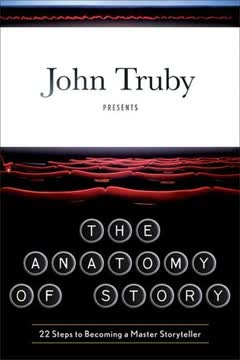
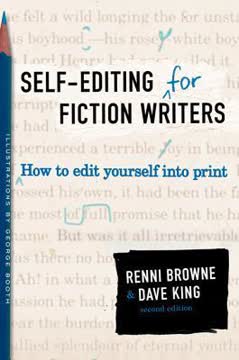
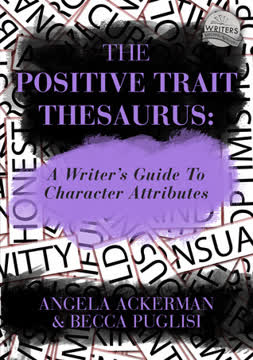
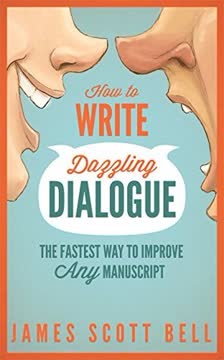
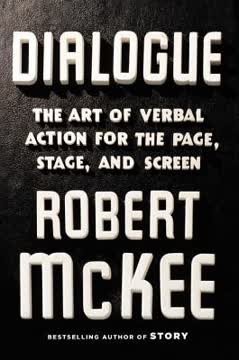
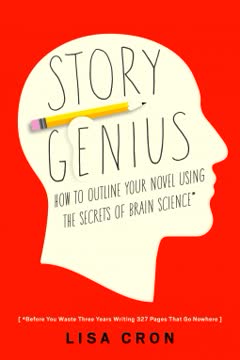
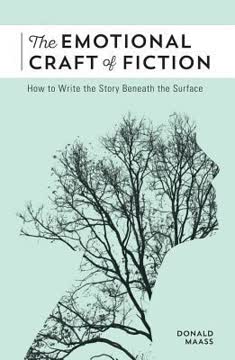

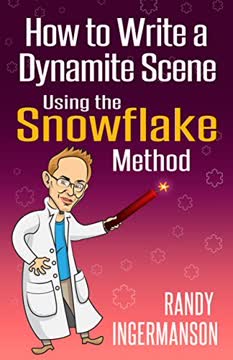
Download PDF
Download EPUB
.epub digital book format is ideal for reading ebooks on phones, tablets, and e-readers.
